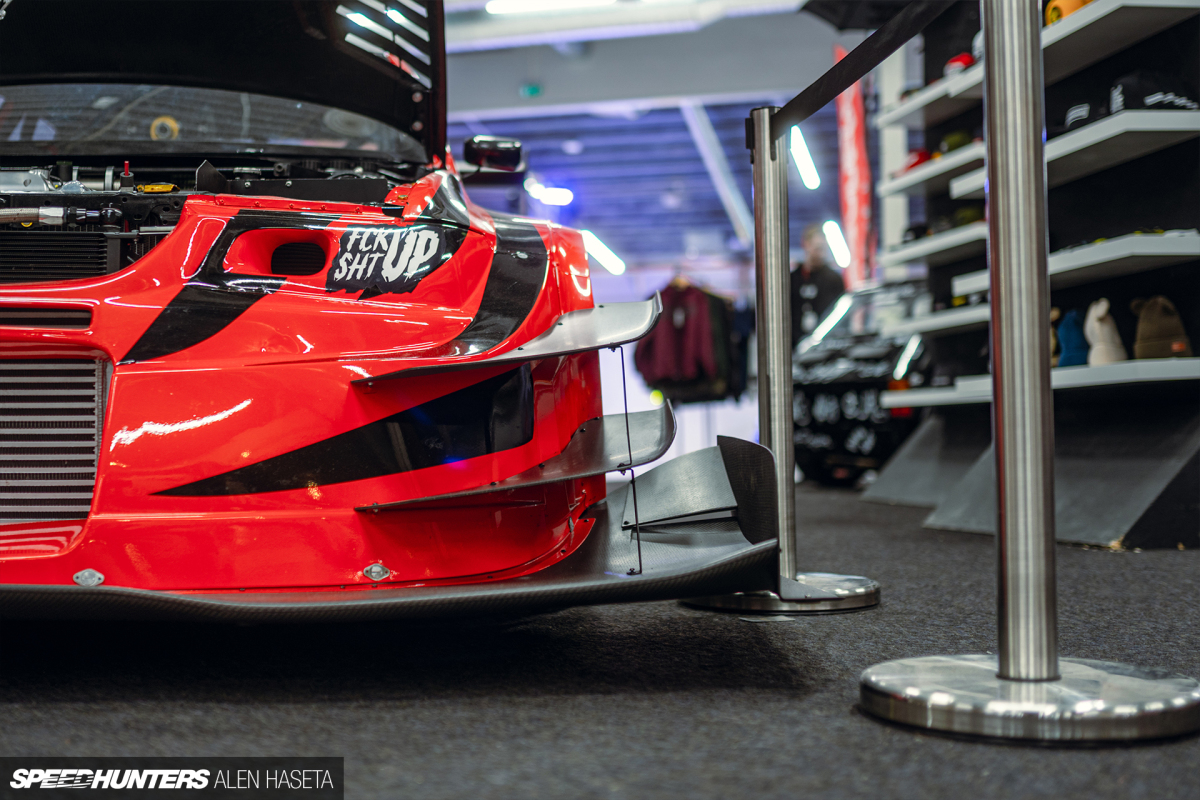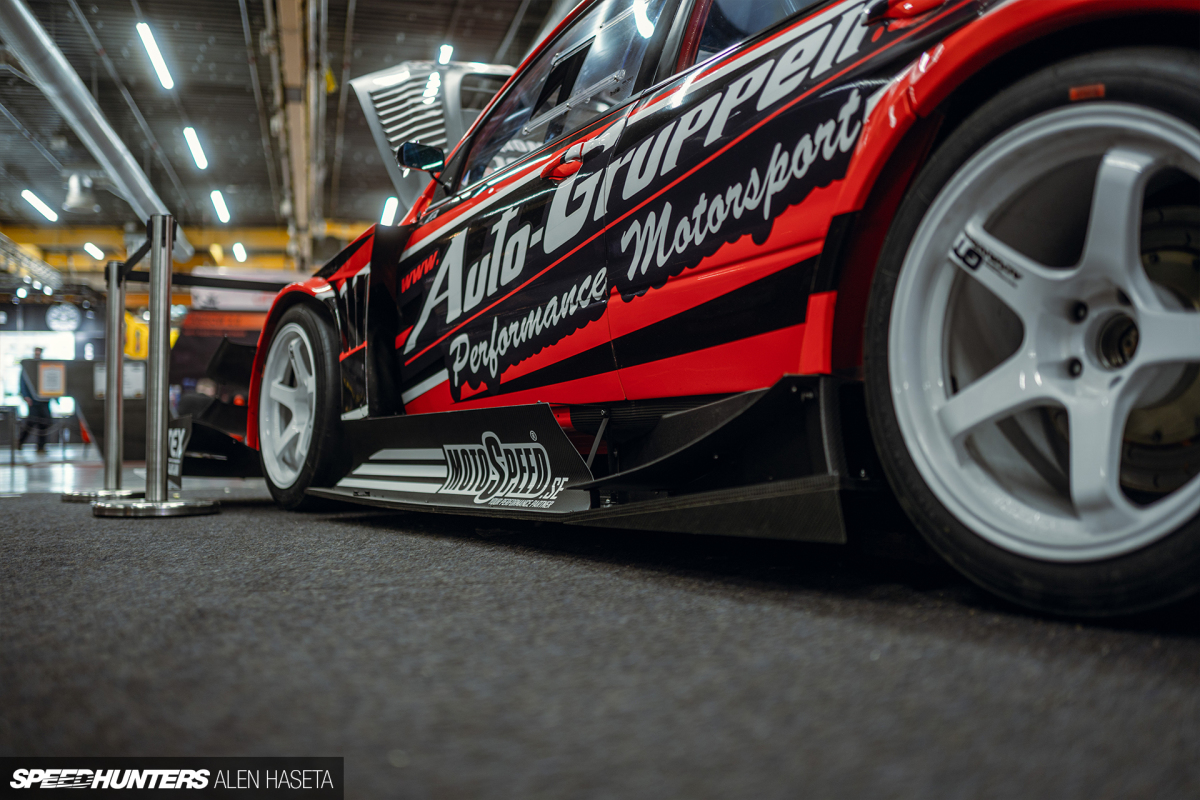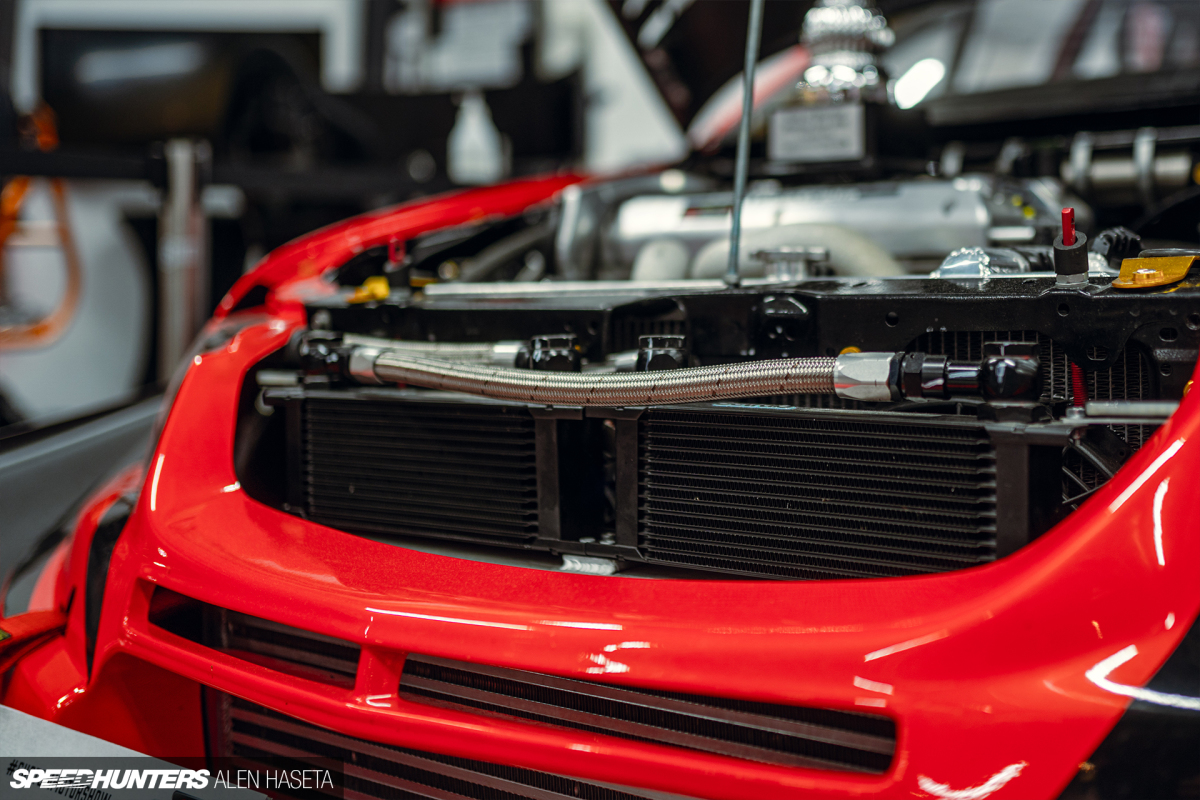I have to give credit where credit is due.
If not for the coverage I saw Speedhunters and Narita Dogfight long before I started contributing here, I wouldn’t care so much about time attack today. The content coming straight from the pit lane garages of the Tsukuba Circuit piqued my interest and I’ve found myself following the attack scene on my doorstep in Sweden ever since.
The Custom Motor Show (AKA Elmia) always showcases the best (and fastest) time attack cars in the country, and this year a 2005 Mitsubishi Lancer Evolution IX built by the guys Auto-Gruppen caught my attention in room X.
I mean, how could it not be?!
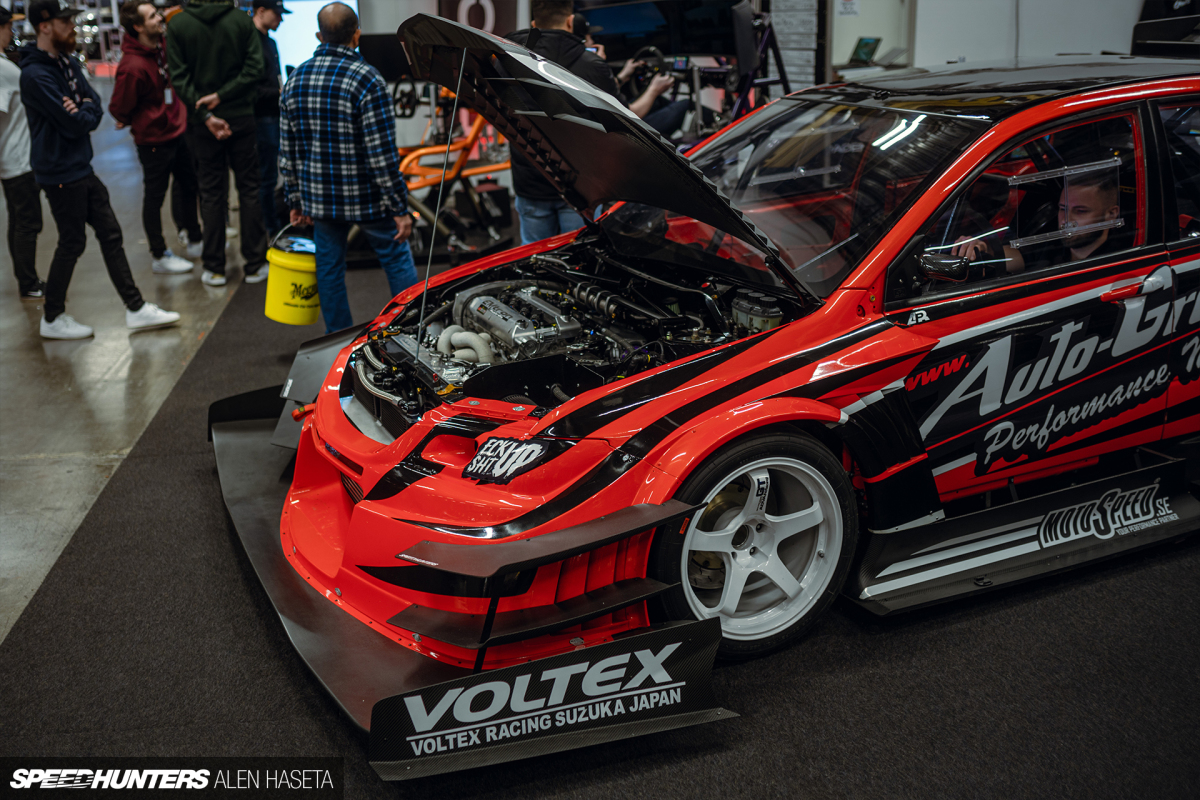
Mellerud-based Auto-Gruppen has been involved in Swedish motorsport since 2004. Since then, it has earned a reputation as one of the best performing tuners in Scandinavia. At the Elmia show, I met Nader Derakshan, Auto-Gruppen’s chief technician, and he was happy to talk to me about all aspects of this wild build.
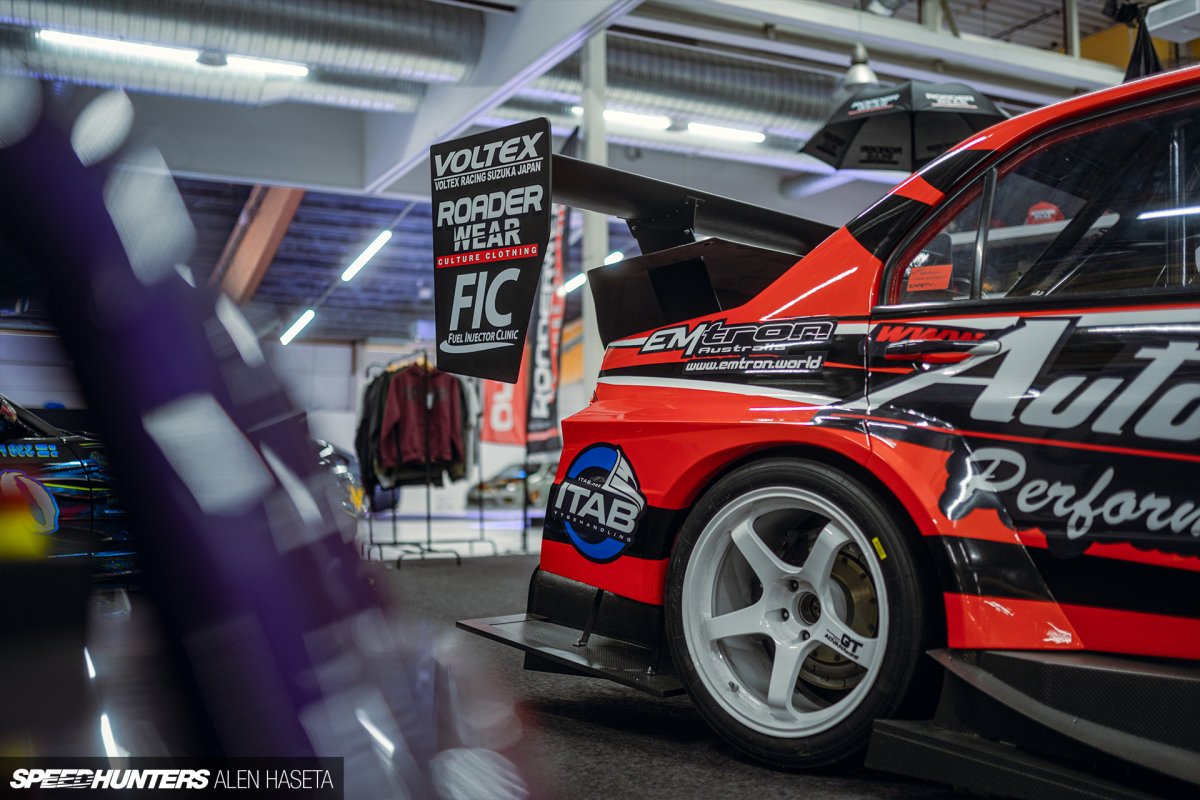
Since Auto-Gruppen bought the Evo IX in 2018, the team has spent more hours than they can count perfecting every inch of the car, much of that time troubleshooting. That being said, once the car feels good at every stage, they move on to the next stage of development.
The results achieved on the track so far speak for themselves: Mantorp Park: 1.16.1; Kinnekulle Ring: 51.19 (both circles half-sliced). And that’s not all. During its debut season in 2020, the Evo received three trophies and broke two records while the Auto-Gruppen was still testing and fine-tuning the car.

You’ll never break records without quality aftermarket hardware, and the Auto-Gruppen Evo is absolutely dripping in it.
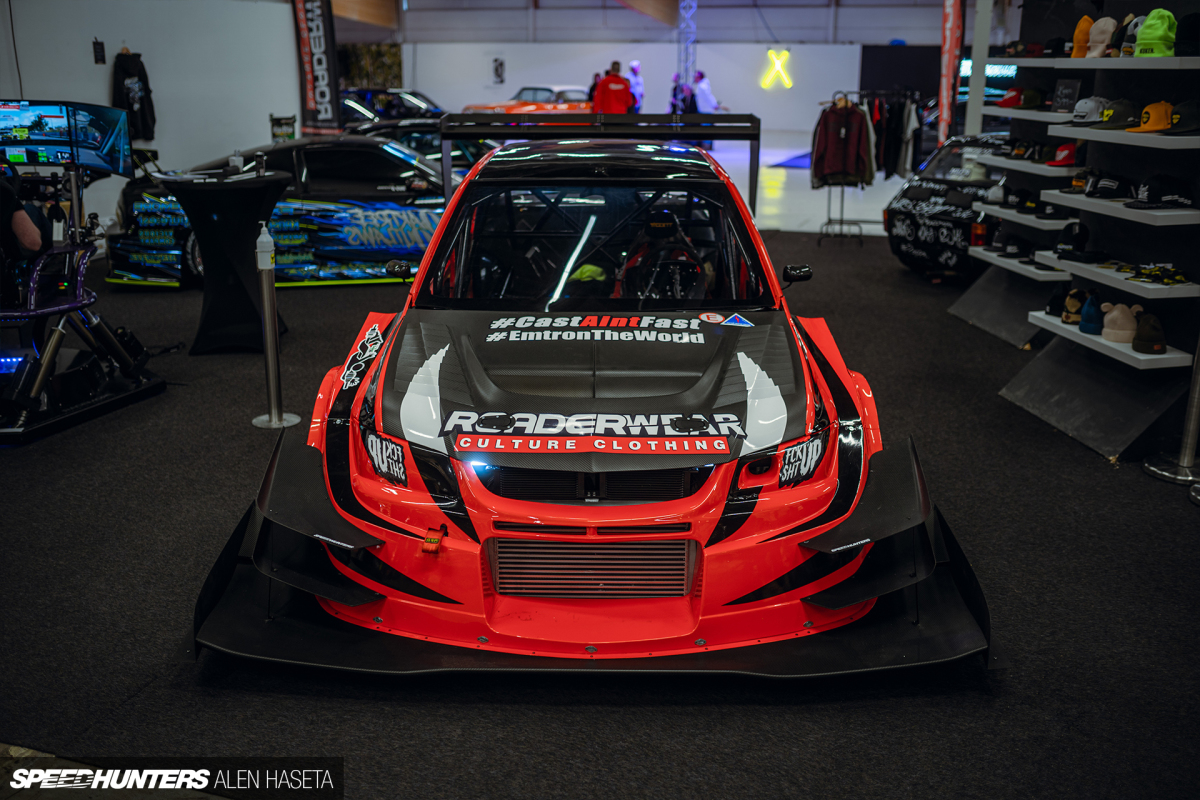
First, the exterior, which includes the full Voltex Ultimate Time Attack G-Force Aero package. There aren’t many cars running with this kit anywhere, let alone here in Sweden, but it’s a serious piece of equipment and priced accordingly – almost $50,000 USD.
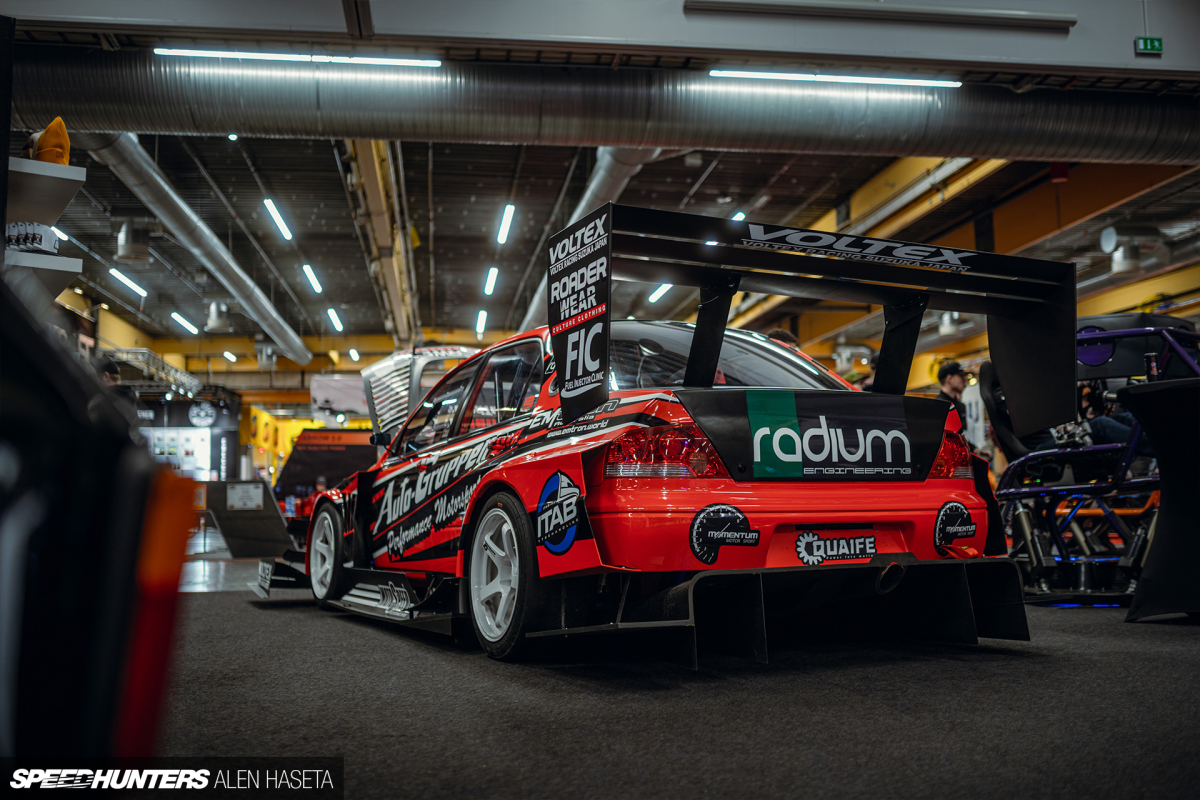
The doors, front fenders and both bumpers are fiberglass, but everything else is dry carbon. Very few modifications have been made to the aero to give it the best performance on the Swedish tracks, and Nader pointed out that at 200km/h the car already produces almost 2 tonnes of downforce, which is insane.
Tubular frames are often widely used in time attack cars of this caliber, but the Auto-Gruppen Evo IX class rules do not allow this. Modifications to the inner bodywork and chassis frame are allowed, however, and next season the team will focus on further weight reduction.
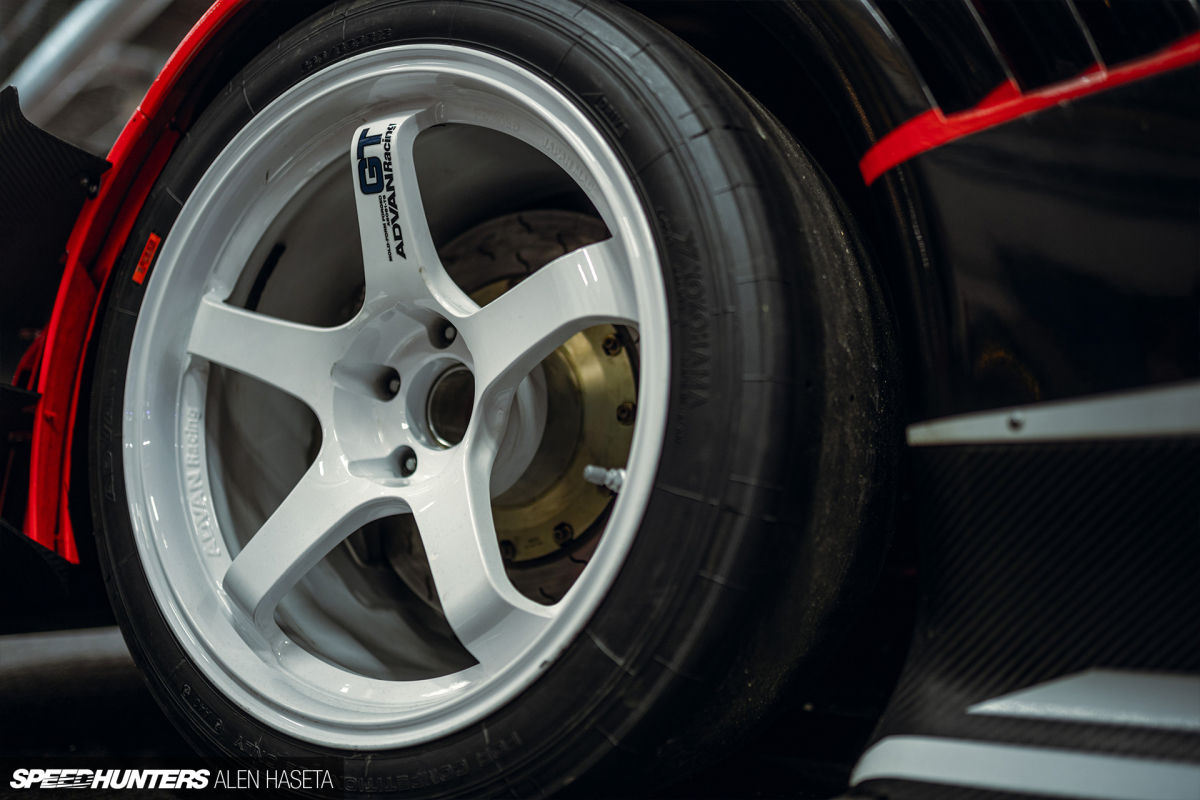
The Lancer had nothing but high-quality Japanese-made wheels, and the square 18×11-inch Yokohama Advan GT setup – currently with Yokohama Advan A005 280-section slicks – looks right at home. It’s often the things you don’t see that are most interesting, and for the 2023 season Evo Izze-Racing is running laser ride height and TPMS sensors on the wheels. In addition, each tire has temperature sensors that measure 16 channels on the inner cylinders, providing a wealth of data to better understand and optimize handling. In total, including the engine, there are 50 sensors around the car.
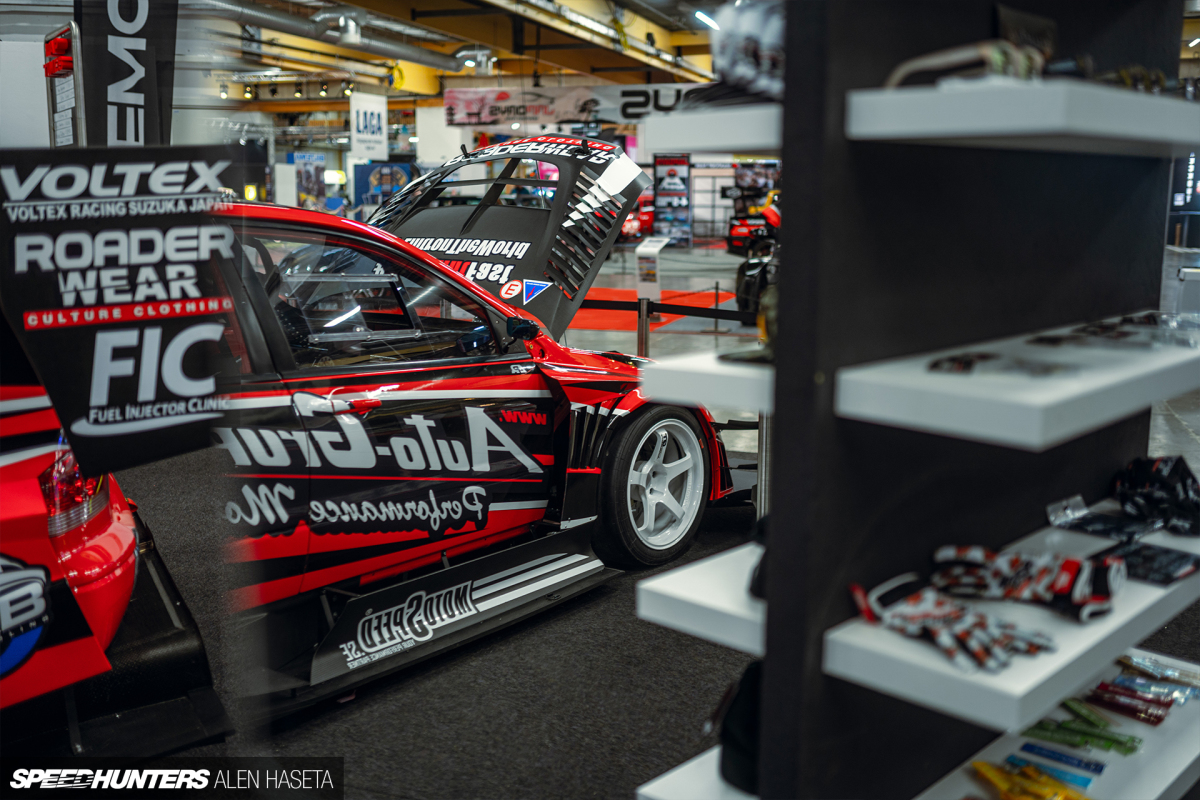
The suspension setup is designed around MCA Gold Series coilovers and chro-moly RaceFab arms that were custom built for the application. Giant Alcon Racing brakes are mounted on Brypar billet pillars at all four corners with adjustable timing via in-car Tilton controls.
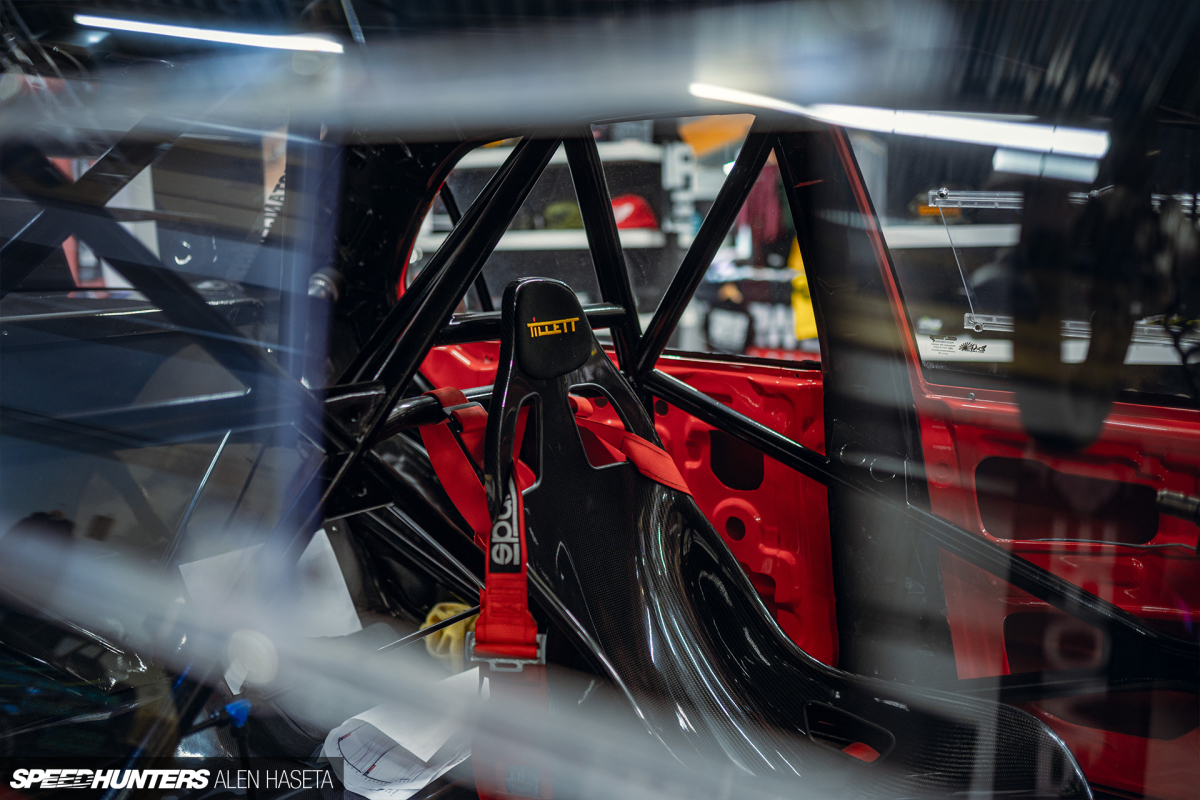
For some reason I only managed to get a picture of the interior, but apart from the FIA-certified roll cage and Tillet B8 carbon seat, Sparco 6-point harness, Momo handlebars and Tilton 600 series pedal box, there isn’t much to it.
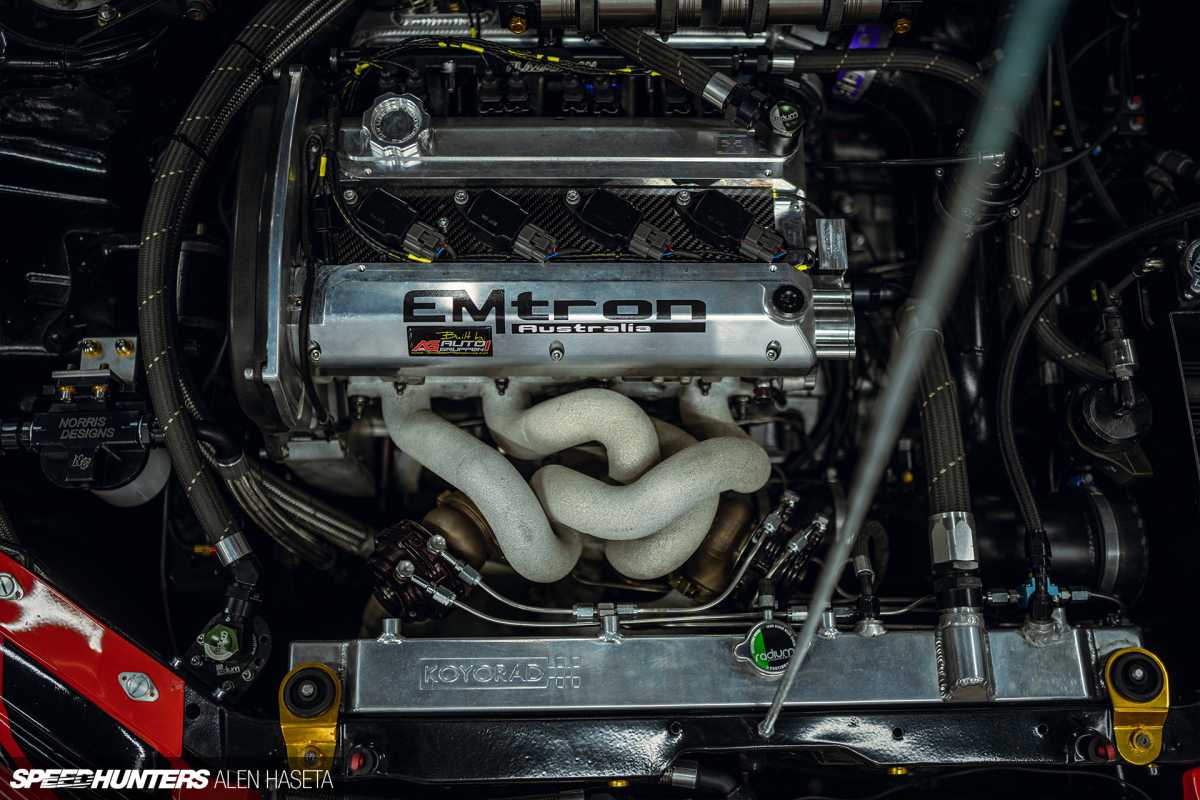
Under the dry carbon hood of the Voltex Tilton Version GT is a Mitsubishi 4G64 engine built up to 983 Whp. It’s based on a Bullet Race Engineering billet block with JE pistons, CP-Carillo connecting rods, and a Brian Crower 102mm crankshaft. Up top, the MotoSpeed race-speed cylinder head is loaded with Brian Crower parts.
The turbo is a BorgWarner EFR 9280, the intake manifold is a Plasmaman item, and the dry sump system is from Norris Design. Fuel delivery is via a Radium Engineering cell equipped with three Ti Automotive pumps that feed a staged FIC injector capable of delivering 3,100cc of fuel to each cylinder of the engine. All this is handled by an Emtron KV8 ECU.

Power goes to all four wheels via a Momentum Motorsport Quaife QBE6U sequential transmission with a Geartronics paddle shift system. The drivetrain also includes a Tilton Engineering twin disc clutch, Quaife diff, and Level 2 driveshafts and a carbon prop shaft from The Driveshaft Shop.

Everything at Auto-Gruppen was built from the ground up, and it was done brilliantly. I mentioned earlier that the car was set up for the tracks in Sweden, but the team’s ultimate goal is to take the Evo overseas. The World Time Attack Challenge in Australia is on Auto-Gruppen’s sights, and Nader has hinted that I might visit Japan’s Tsukuba Circuit at some point in the future.
If that happens, I’ll sneak into Nader’s trunk and watch the car in action for myself.
Alen Haseta
Instagram: home


